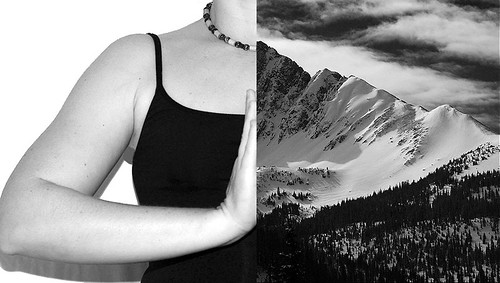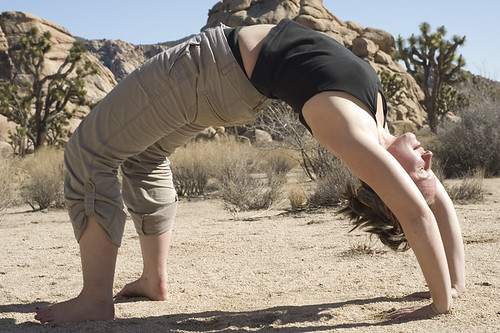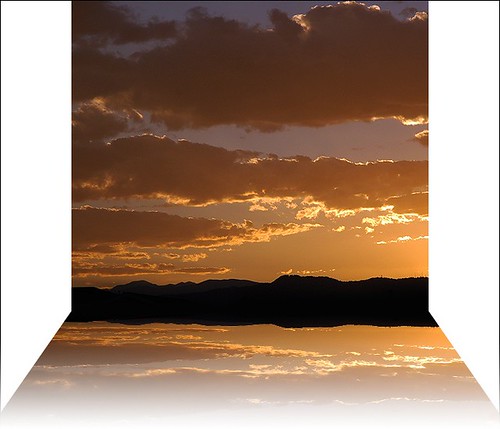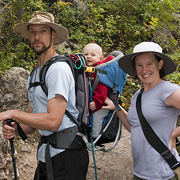Yoga for Rock Climbers
I actually started my yoga practice at about the same time as I started rock climbing. It was fall 2001, I couldn’t run outside as much as I wanted to, and I was looking for some fun activities that I could do indoors. I found out that there was a rock gym a few miles from my office and I convinced a few of my friends to go out with me. I also found a fantastic yoga studio near my office and started going to classes about once a week.
Yoga and rock climbing have always been linked in my mind. I can’t imagine doing one without the other. Mark also practices yoga with me on a fairly regular basis. Many climbing pros (Chris Sharma, Lynn Hill, Dean Potter and Steph Davis) have mentioned yoga is part of their fitness and training regimens.
Recently, several of my friends have started to complain about typical over-use injuries (I suppose we’re all getting a little older). There seems to be a large number of elbow, knee, back and shoulder problems floating around. So I thought I would write a quick post answering some of the FAQs I hear about yoga, and encourage everybody, to get out and try something new this winter. You might be surprised how enjoyable it is, and how much it helps your other favorite sports.
What is yoga?
Yoga, in the US, is mainly an exercise regime that simply consists of a series of postures, or poses, and breathing exercises that go along with them. There are litterally thousands of poses and variations on those poses under the general heading of “yoga.” Most involve stretching, balancing, or strength, though some are as simple as sitting or standing with good posture. Which poses are done, how many of them are done, what environment you practice in, and how the poses are connected from one to the other are all details that are varied between different styles of yoga.
Why is yoga good for climbers?
I’m sure you’ve heard this before, but most styles of yoga in the US practice poses which increase flexibility, strength and mental discipline. I’ve often thought of climbing as a very interesting sport. It involves maintaining a contorted position on the rock for several seconds at a time, while you feel around with one hand for the next hold or plug in gear or clip a rope.
Yoga can be exactly the same. You move through several postures, and then settle down and hold one for several breaths, and then begin to move through another series. The great thing about yoga, though, is that it is inverted to rock climbing. In climbing, our base of support is in front or above us, and we spend most of our time pulling up. In yoga, our base is directly below us, and we spend most of our time pushing down.
This is the final, and possibly most important, benefit of yoga. It helps prevent injuries by increasing your range of motion, stretching muscles and connective tissue that tighten with time, and strengthening muscles that counter-balance your over-used climbing muscles.
How do I find a good place to practice?
Yoga has become so popular in the US that most fitness, and even some rock gyms, offer classes. Often, however, those classes can be repetitive or dull, and sometimes the teachers are not as well trained, which can result in yoga-related injuries. A good yoga studio will usually have a wide variety of different class types and different teachers, all of whom should be certified yoga teachers. To locate a studio near you, Yoga Journal has a great directory.
The studios talk about different types of yoga. Which one do I want?
There are lots and lots of different styles of yoga. Most studios offer a free class or week when you first come in, so you can try it out and see if their style matches what you are looking for. Most rock climbers, or outdoor enthusiasts, are people who love movement, so more flowing styles fit their goals. These include styles like Flow yoga, Vinyassa or Ashtanga. If you are looking to build serious strength, styles like Bikram and Iyengar can fit the bill. Bikram, in particular, is seriously intense. It is practiced in a room heated to about 110ºF, for an hour and half, and involves very strength-building postures. If you are looking for something less intense, try finding classes described as Restorative yoga, Hatha, Kripalu or Yin Yoga.
I live in Colorado too! Where do you practice?
I actually have fallen in love with a chain of yoga studios called CorePower Yoga. The studios employ well-trained, excited, enthusiastic teachers, and have locations all over Colorado, California, Minnesota, Chicago and Portland. The classes follow a classic Vinyassa flow style, and, at least here in the Fort, can be very spiritual and physical at the same time. A lot like rock climbing.
My favorite part, though, is that the studio is heated to around 100ºF, which is manageable, and allows my muscles to lengthen and stretch without getting pulled or sore the next day. I don’t think I will ever go back to practicing in a non-heated studio. Plus, they usually stop at some point during class, change the music from flowing chants to rockin’ Madonna, and do 5 minutes of an intense ab workout. I think this has made some of the biggest impacts on my rock climbing so far. I had no idea how much a stronger abdominal region would help make all forms of climbing easier.
So, if you’re feeling less than excited about spending the winter in a rock gym, or if your elbows have been killing you, or if you just want to experience the perfect companion practice to your rock climbing, look up a studio near you! Feel free to ask any more questions you might have in the comments below!






